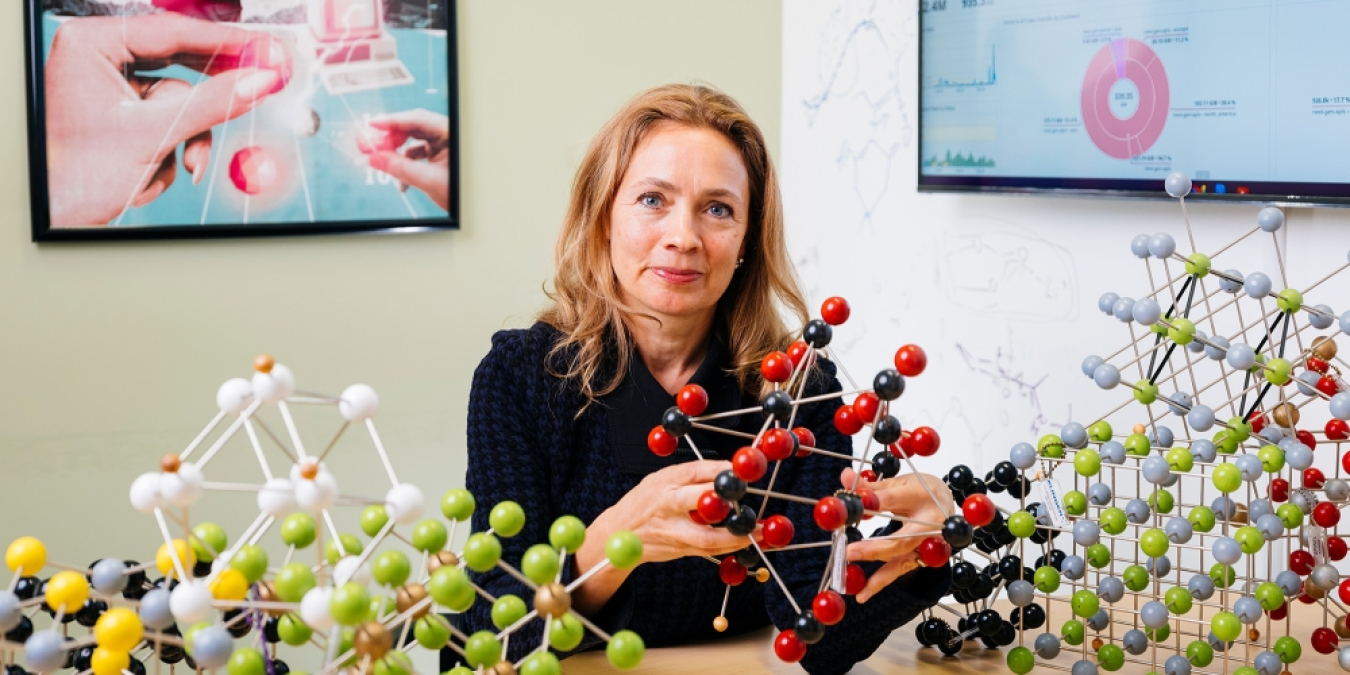Adapted from this DOE article

Scientists recognized by the Department of Energy (DOE) Office of Science Distinguished Scientist Fellow Award are pursuing answers to science’s biggest questions. Kristin Persson is a professor at the Department of Materials Science and Engineering at the University of California, Berkeley and the director of the Materials Project at DOE’s Lawrence Berkeley National Laboratory. She was Director of the Molecular Foundry from 2020 to 2024.
Thomas Edison tried out more than 2,000 different materials for the lightbulb filament before finding the right one. Until recently, materials scientists were stuck taking a similar approach. They would be inspired, make a new material, and test it for needed properties. They would keep doing that same process over and over until they found an appropriate material.
Even finding out the properties for a specific element took enormous amounts of time. When I was a graduate student in Stockholm in 1996, I spent an entire year figuring out some properties of tungsten. If you wanted curated data about materials back then, you pulled out your reliable reference book on Phase Diagrams and Physical Properties.
But now there is a better way forward.
Science advances through different paradigms – shifts in how we work to understand the world. Machine learning and artificial intelligence bring us to the fourth paradigm. This is a major change from what we’ve done in the past.
The first and second paradigms are the ones that non-scientists are familiar with. The first is empirical science – using experiments and observations to understand the world around us. This was the only paradigm until the 1600s. The second paradigm is theoretical science. This is developing physical laws, like the law of thermodynamics.
The third and fourth paradigms have come about more recently. The third paradigm centers computational science. The ability to solve equations without doing them manually revolutionized the speed and complexity by which we could do research. The fourth paradigm focuses on harnessing data to conduct big science. This approach includes artificial intelligence and machine learning. Because of this shift, the process that took me a year in graduate school now only takes seconds. This is a fundamental paradigm change.
Today, we’re able to use all four paradigms simultaneously, each building on the other. With support from the Department of Energy’s (DOE) Office of Science, much of my career has been spent managing data to make that fourth paradigm possible. I work to answer the question, “How can we curate data to accelerate the discovery of new, useful materials?”
Back in 2010, that need inspired me to write a proposal. DOE’s Lawrence Berkeley National Laboratory held a competition to imagine and develop mobile applications that could advance the lab’s mission. With postdoctoral researcher Michael Kocher, I pitched the Materials Genome Browser. This app would allow scientists to look for the right types of material properties. A few months later, the laboratory accepted my proposal for a Laboratory Directed Research and Development project. This project focused on using data mining to accelerate how we design materials. Together, these two projects became the foundation for the Materials Project.
The Materials Project officially started the next year as one of the five inaugural software centers in DOE’s competition for awards supporting the goals of the Materials Genome Initiative.
We had three goals:
- Accelerate materials discovery by developing advanced scientific computing methods and designs.
- Modify computations so they cover all known inorganic compounds and use predictions driven by data.
- Push data and design tools to make them available to the larger materials community.
The Materials Project website now allows scientists to filter potential materials for useful properties before they make them. With specialty search engines, researchers can drastically reduce the number of chemical structures they have to test to find new materials. Running thousands of density functional theory calculations that provide information on these structures requires just three lines of code and a submission command.
I hope one day for it to be like J.A.R.V.I.S. in the movie Iron Man. In the film, Tony Stark can just pick elements and have the computer synthesize them. While we aren’t there yet, that’s the dream.
Read more in the full article.

